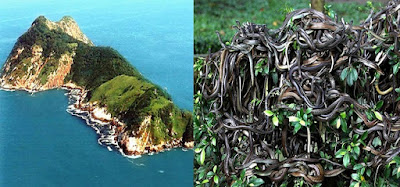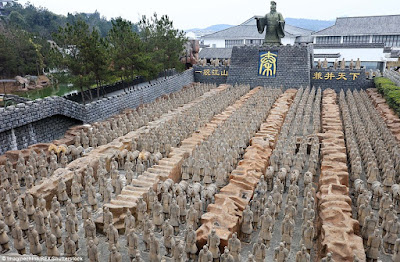Mysterical Mountains (Zhangjiajie)
Zhangjiajie (simplified Chinese: 张家界; traditional Chinese: 張家界; pinyin: Zhāngjiājiè) also known in Tujia language as Zhangx jif avlar (dzaȵ˩ ji˥ a
˩la˥) is a prefecture-level city in the northwestern part of Hunan province, People's Republic of China. It comprises the district of Yongding, Wulingyuan and counties
of Cili and Sangzhi. Within it is located Wulingyuan Scenic Area which was
designated a UNESCO World Heritage Site in 1992 as well as an AAAAA scenic area by the China National Tourism Administration
The city itself was previously named Dayong (大庸), and has a recorded history dating back to 221 BC. People
lived here along both banks of the Lishui River (the
mother river in Zhangjiajie), now within the boundaries of Zhangjiajie City,
very early during the Stone Age. Human settlement in this region dates back
100,000 years, rivaling such famous sites as Xi’an, Beijing and others. In
1986, the Academy of Chinese Social Science discovered Stone Age relics in Cili
County, unearthing 108 articles of stoneware; mostly tapered-form,
hacked-tamped and plate-shaped works. According to archaeological experts’
textual research, all of these wares were produced about 100,000 years ago.
Shortly thereafter, in 1988, the Archaeological Institute of Hunan Province
found other relics in Sangzhi County, including three pieces of stoneware which
were estimated to have been fashioned over 100,000 years ago.
Ten
thousand years ago, those who lived within the boundaries of what is now
Zhangjiajie City employed fire to bake pottery. Archaeologists have found more
than 20 relics of this kind in Cili County, while in Sangzhi County, a black
clay pot adorned with a unique design was unearthed dating back ten thousand
years. During that period, this pottery-firing technique was the most advanced
in China. These technological advancements in the fashioning of stone tools and
pottery would seem to indicate a highly developed culture in this region.
However, the society which developed only endured briefly before waning and
being superseded by other regional powers. This seems understandable in view of
Zhangjiajie's remote geographical position, its undeveloped land and river
transportation, and its mountainous terrain making cultivation difficult. For
these reasons, Zhangjiajie has been labeled "the Land of the Savage
Southern Minority" since the earliest recorded history. Additional name
descriptors have been the "Wuling Rude People" and "Tujia Rude
People", indicative of discriminatory views held against the regional
culture
Glass bridge that enchances the thirll of flying ......






Comments
Post a Comment
Your suggestions